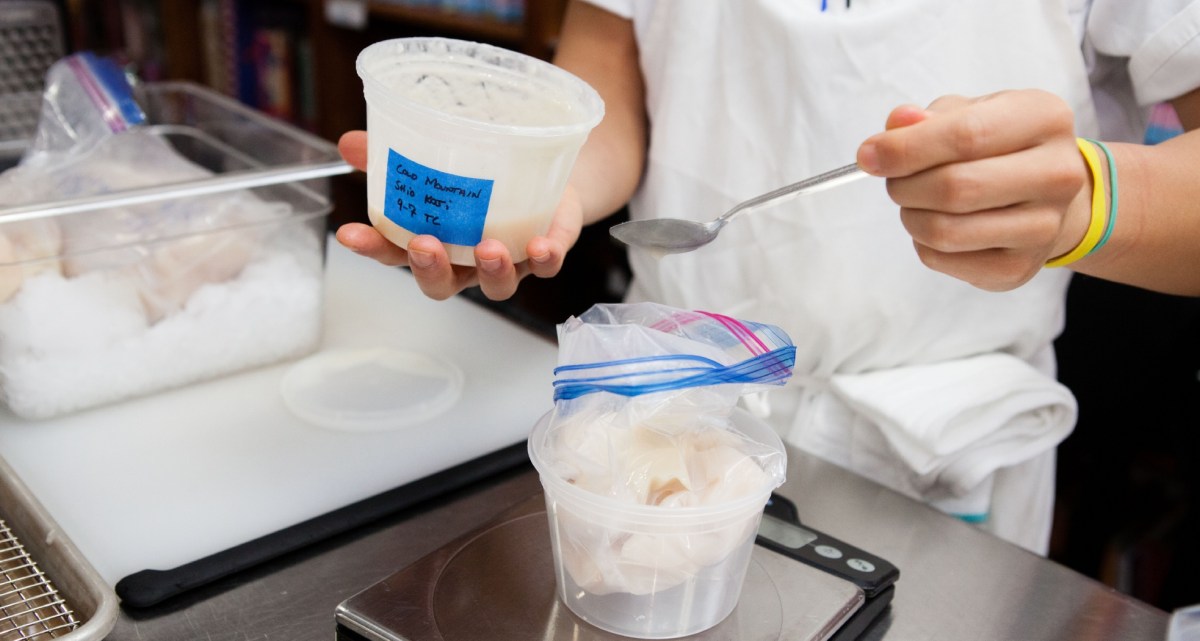In this weekly series, Associate Editor Tim Chin and Test Cook Sasha Marx take you behind the scenes of Cook’s Science and give you a glimpse into our recipe development process, from how we come up with recipe ideas, to test kitchen failures, to discoveries we make along the way. This week, Tim fills us in on his recent work with our favorite ancient (and delicious) mold: koji.
Since beginning my work with koji this past summer, I’ve been slowly and steadily exploring the world of possibilities that this delicious mold has to offer. The path has taken me all over the place, from koji-cured meats, to alternative misos, to amino sauces. Not all of my forays into koji-land have been successful (or edible), but it’s all been interesting. So I thought I’d shed a little light on what I’ve been up to—and what’s to come.
Traditionally, koji is used to make four common products: shio koji, amazake, miso, and soy sauce. I’ve mainly been focusing on the first two. Shio koji (and its variant, shoyu koji) is a porridgey mixture laden with tenderizing and flavor-boosting enzymes that make it a great marinade for meats. Inspired by the work of Jason Ignacio White, I’ve been exploring different flavors of shio koji by using different liquid bases. Right now I am playing with toasted nut milks in place of water: hazelnut, almond, pecan, even pistachio milk. Hopefully I’ll be able to use these products to marinate meats and maybe even pickle vegetables.

Amazake is a sweet rice drink touted as a health food in Japan. It is made by cooking rice to mush and adding dried rice koji; the mixture is incubated for up to 48 hours until it turns milky, silky, and sweet. At this incubation temperature, amylase enzymes break down free starch in the rice and convert it to sugar. Amazake also has many of the same flavor-enhancing and tenderizing properties of shio koji—the only difference being that it’s usually sweet and not the slightest bit salty. Like shio koji, it can also be used to tenderize meats, but without imparting salinity. Out in Cleveland, Jeremy Umansky marinates chicken in amazake for a few hours—drastically tenderizing the meat—before cooking it.
According to Jeremy, amazake can even be used to make cultured butter—though the exact mechanism behind it is not well understood. To do this, substitute amazake for the buttermilk that is normally added to the cream, to make a non-traditional culture—and then make your butter from there. The last batch I mixed practically churned itself after a day or two of culturing. It was thick and separated completely from the rest of the liquid phase. It had a funky, sweet aroma, but a slightly bitter aftertaste. I suspect I left the cream to culture too long, so I’ll have to try a new batch with a shorter culturing time.
Beyond shio koji and amazake, I’ve been experimenting with more non-traditional applications for koji. Specifically: inoculating meats and vegetables directly with koji spores, rather than first growing the koji on rice to create shio koji. A few months ago, my first trials with these techniques were a relative bust: Other microbes spoiled the food before the koji mold had time to grow. I’ve since tweaked my methods according to Jeremy’s instructions, and had successful tests growing koji on pork chops, steaks, and scallops with no spoilage. Pork chops and steaks were especially interesting—super funky, savory—but still a bit off-putting. I suspect the incubation temperature was a little too high—which might have contributed to off flavors—so I’ll have to refine my technique.
Lastly, I’m playing with amino sauces following Jason’s work. By adding salt, water, and dried rice koji to a protein-rich liquid—such as egg whites—and aging the mixture for months, I’m going to try to create an intense, savory, liquid-umami sauce, similar to soy sauce. In addition to an egg-white sauce, I have a couple tests with aquafaba (the viscous liquid that comes from cans of chickpeas) and similar canned bean-waters planned. Check back here in a few months to see the results!
These and other non-traditional treatments are part of a growing movement of chefs and enthusiasts who are pushing the boundaries of what koji can do. Do you have any experience with alternative koji techniques? Any technique you’d like us to try out? We’d love to hear from you.
Photography by Steve Klise and Kevin White.




